CHAPTER TWENTY-NINE
The Book of Revelation
Orientation
No New Testament book is as infamous as Revelation as a springboard for wacky theology, end-of-the-world predictions, and crazy speculations about world events and world leaders. It is a happy hunting ground for eschatological weirdos and cult leaders. On top of that comes the understandable fear that the book is enormously difficult to interpret, with its bizarre imagery, impenetrable symbols, and just plain freakiness. Because of these factors and others, Revelation either is ignored and unpreached or is the object of crazy-eyed obsession.
The Historical Origins of Revelation
Although Revelation has more than its share of interpretive difficulties, it is not as impenetrable as many think. In fact, its central message is very simple: God wins in the end. The whole book is concerned with the victory of God in Christ over the destructive forces of evil. It is a testimony to the fact that God is bringing about a renewal of his creation in which evil will no longer be allowed to distort, disfigure, or destroy. And at the very center of the story is Jesus Christ, a victorious lion who is also a humble, slaughtered lamb. It is his blood and his conquering of death that seal the fate of evil spiritual beings, evil people, and evil itself.
Apocalyptic Literature
It is no accident that Revelation contains some frightening images, and even Christ himself is depicted as truly terrifying. Revelation is no joke, and neither is the impression it seeks to make. The vanquishing of evil is a very serious matter, and the warrior warlord Jesus Christ is not to be trifled with. He is powerful, he is righteous, and he is coming to obliterate the enemies of God.
What Time Frame Does Revelation Address?
The real purpose of Revelation is not to fill our minds with speculative timelines about the end of the world, or to identify the latest tyrannical leader as the antichrist (a term that never occurs in Revelation, by the way). Revelation exists to encourage believers everywhere and at all times that God is in control. Evil will not dominate forever. God will deliver his people. God will restore his whole creation. Its message is one of profound hope and speaks especially to those enduring persecution and suffering. It is a great gift to the church, and we would be impoverished without it.
Exploration—Reading Revelation
To the Seven Churches
READ REVELATION 1:1–8
The book is named for its first word in Greek, apokalypsis, which is translated as “revelation.” It refers to the revelation of a vision about Jesus Christ given to John by God (1:1–2). John describes his written account of this revelation as a prophecy that will bless its readers (1:3).
The Structure of Revelation
John addresses the prophecy to the seven churches in Asia, which are named later (1:11) and were located in the region that is now western Turkey. John’s greeting is actually from Father, Spirit, and Son, described respectively as the one who is, who was, and who is to come; the seven spirits; and Jesus Christ, the firstborn from the dead and ruler of all kings (1:4–5a). God is eternal, existing then, now, and later. The Spirit is described as seven spirits, since seven represents the completion of God.
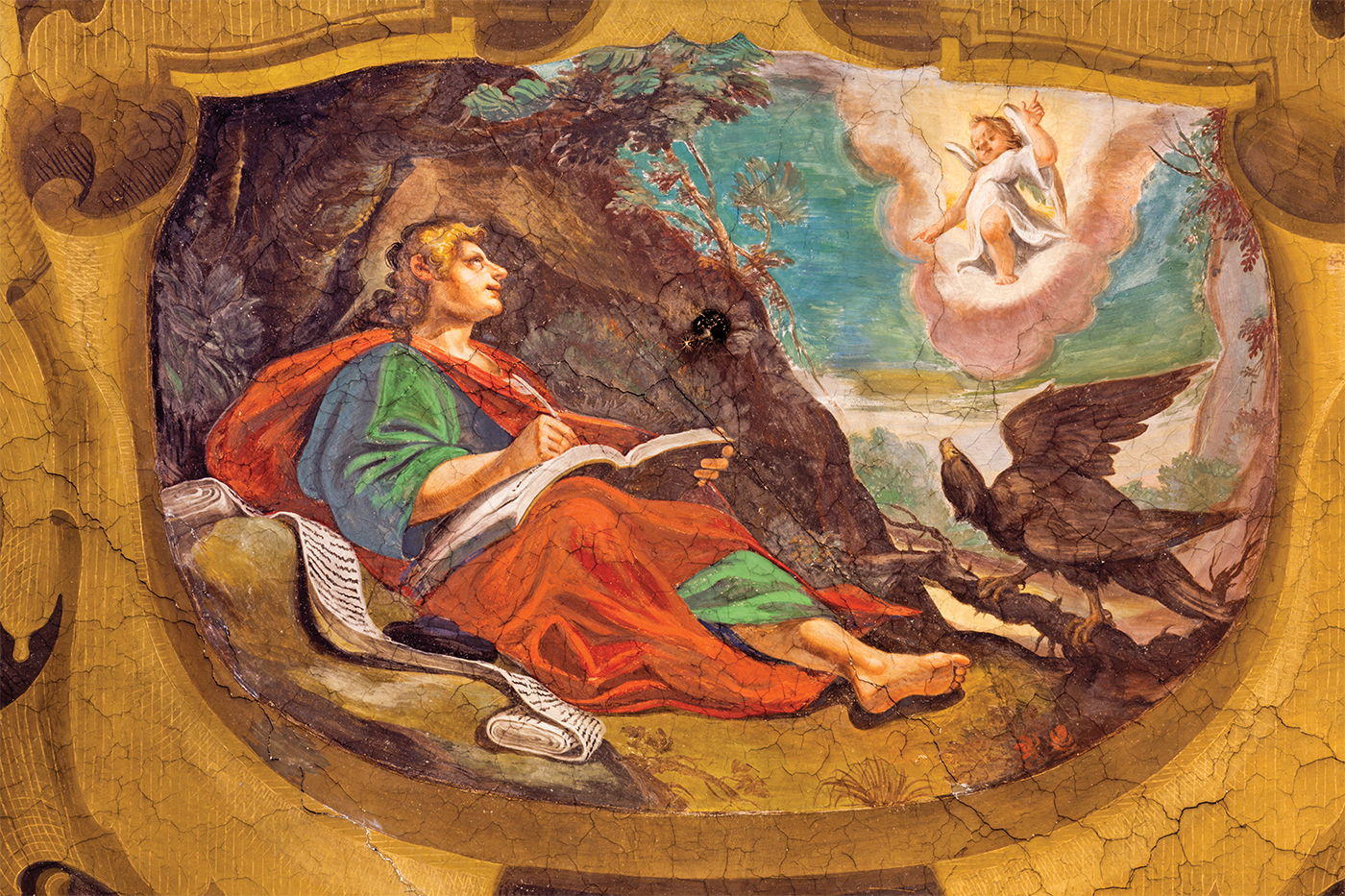
Figure 29.1. Vision of St. John the Evangelist on the Patmos Island by Tommaso Sandrini, fresco in La Chiesa di San Giovanni Evangelista, Reggio Emilia, Italy (1613) [Shutterstock / Renata Sedmakova]
A brief doxology is offered to Christ, the one who has brought freedom from sin through his blood and made us into a kingdom of priests forever (1:5b–6). And this is supported by a pastiche of Old Testament quotations that sound like they had always belonged together, talking about Jesus (1:7). Finally, God identifies himself as the Alpha and the Omega—the first and last letters of the Greek alphabet (1:8).
Revelation and the Old Testament
Seeing the Son of Man
READ REVELATION 1:9–18
John is on the island of Patmos (now part of Greece) when the revelation is given (1:9–10). He is instructed to write down what he sees and send it to seven churches, in Ephesus, Smyrna, Pergamum, Thyatira, Sardis, Philadelphia, and Laodicea. All of these locations are within John’s sphere of influence while he is based in Ephesus for the last several decades of his life. In other words, Revelation is addressed to churches known to John and as part of the pastoral relationship he shares with them.
Why Was John on Patmos?
John tries to see who had spoken to him but instead sees seven golden lampstands and the Son of Man standing among them (1:12–13a). He is an awesome figure with eyes like fire and his face shining like the sun (1:13b–16). So awesome is he, in fact, that John falls at his feet in dread, but the Son of Man comforts him (1:17–18a). Jesus is “the First and the Last” (= the Alpha and the Omega), the one who died but is now alive forever. He holds the keys to death and Hades (1:18b). He again instructs John to write what he sees in his vision and explains that the seven lampstands represent the seven churches to which he is to write (1:19–20).
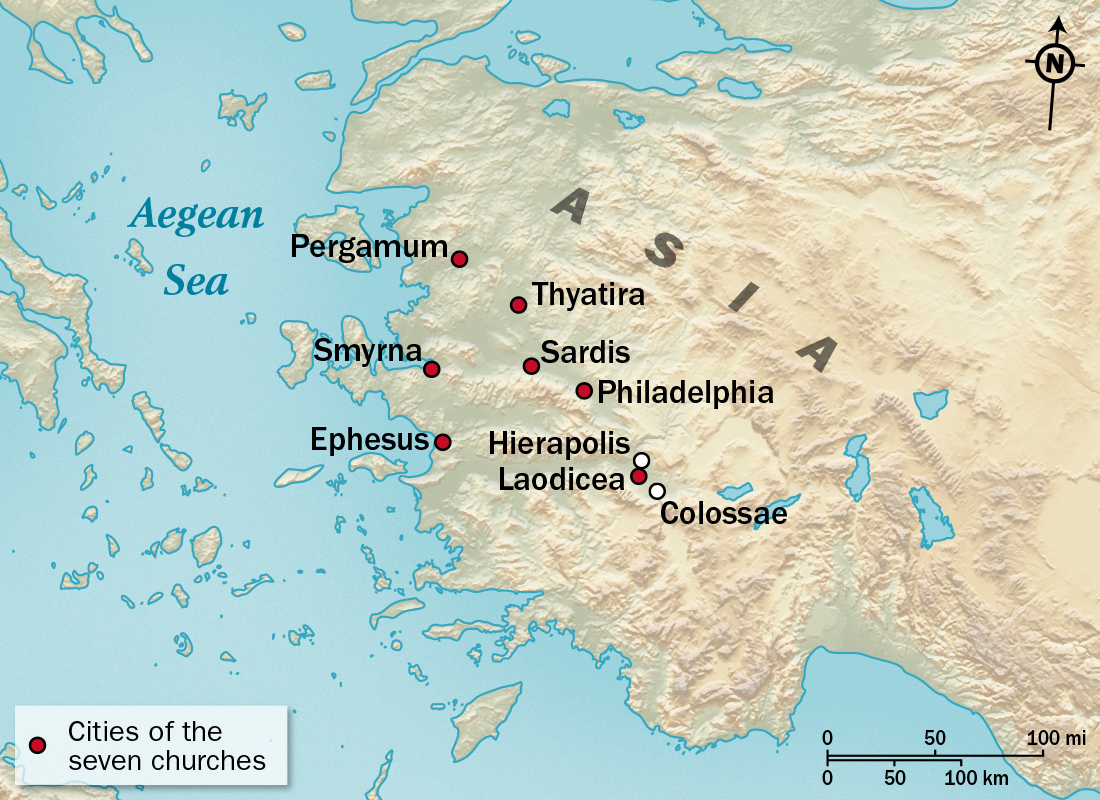
Figure 29.2. The seven churches of Revelation [© Baker Publishing Group]
Numbers in Revelation
Letters to the Seven Churches
READ REVELATION 2:1–3:22
Chapters 2–3 consist of letters to the seven churches in which Jesus directly addresses each one in turn. The letters follow a similar pattern in which Jesus praises each church (except two) and then challenges and warns each. For example, to the church in Ephesus, Jesus praises their work, endurance, rejection of false teaching, and perseverance (2:1–3), but he also draws attention to the fact that this church has lost the love it first had and must repent (2:4–5).
The church in Sardis is the first of two that receives no praise from Jesus. They appear to be spiritually alive but are in fact dead, with the exception of a few individuals (3:1–4). The church in Laodicea is neither hot nor cold, and if they stay lukewarm they will be spit out of Jesus’s mouth (3:14–16). But even these two churches are loved by Jesus, since he rebukes and disciplines those he loves, but they must repent (3:19).
Each letter is followed by a refrain, “Let anyone who has ears to hear listen to what the Spirit says to the churches.” This recalls Jesus’s words during his earthly ministry (Mark 4:9, 23; Luke 8:8; 14:35). But it also draws a connection between the ministry of the Spirit and Jesus, since Jesus’s message is described as what the Spirit says (2:7a, 11a, 17a, 29; 3:6, 13, 22).
Finally, each church is encouraged by the refrain “To the one who conquers . . .” followed by a different promise with each instance (2:7b, 11b, 17b, 26; 3:5, 12, 21). For example, to the church in Ephesus, Jesus says that the one who conquers will be given the right to eat from the tree of life in the paradise of God (2:7b).
The Heavenly Throne
READ REVELATION 4:1–11
After the letters to the seven churches have been composed, John is escorted by the Spirit to a glorious throne in heaven on which someone is seated (4:1–3). This throne is surrounded by twenty-four other thrones, with elders, dressed in white and wearing golden crowns, seated on them, indicating that all other rulers are subjected to the one sitting on the central throne (4:4).
The scene is replete with thunder and lightning, fiery torches, and a sea of glass like crystal (4:5–6a). There are four living creatures covered with eyes: one like a lion, one like an ox, one like a man, and one like an eagle (4:6b–7). Each has six wings and never stops praising God (4:8). As the four living creatures praise God, the twenty-four elders fall before the central throne, worshiping God. They throw their crowns before the throne and give God all honor and glory because he is the creator of all things (4:9–11). Suffice to say, it was an awesome and frightening vision.
The Scroll with Seven Seals
READ REVELATION 5:1–14
John sees that the one seated on the throne has a scroll in his hand, which is sealed with seven seals (5:1). John weeps because no one is worthy to open the scroll, until an elder points to the Lion of Judah, the Root of David, who is able to open the scroll (5:2–5).
Lion of Judah, Root of David, Slaughtered Lamb
Having been introduced as the Lion of Judah, the figure that John sees is a slaughtered Lamb standing amid those gathered around the throne. This Lamb has seven horns and eyes and takes the scroll from the one seated on the throne (5:6–7). The living creatures and the elders fall down before the Lamb and sing in his honor, declaring him to be worthy to open the scroll because he purchased people from every tribe and nation by his blood (5:8–10).
To this worship is added the voices of countless angels who also declare the worthiness of the Lamb (5:11–12). Finally, all creatures of the heavens and the earth ascribe blessing, honor, glory, and power to the one seated on the throne and to the Lamb for all eternity (5:13).
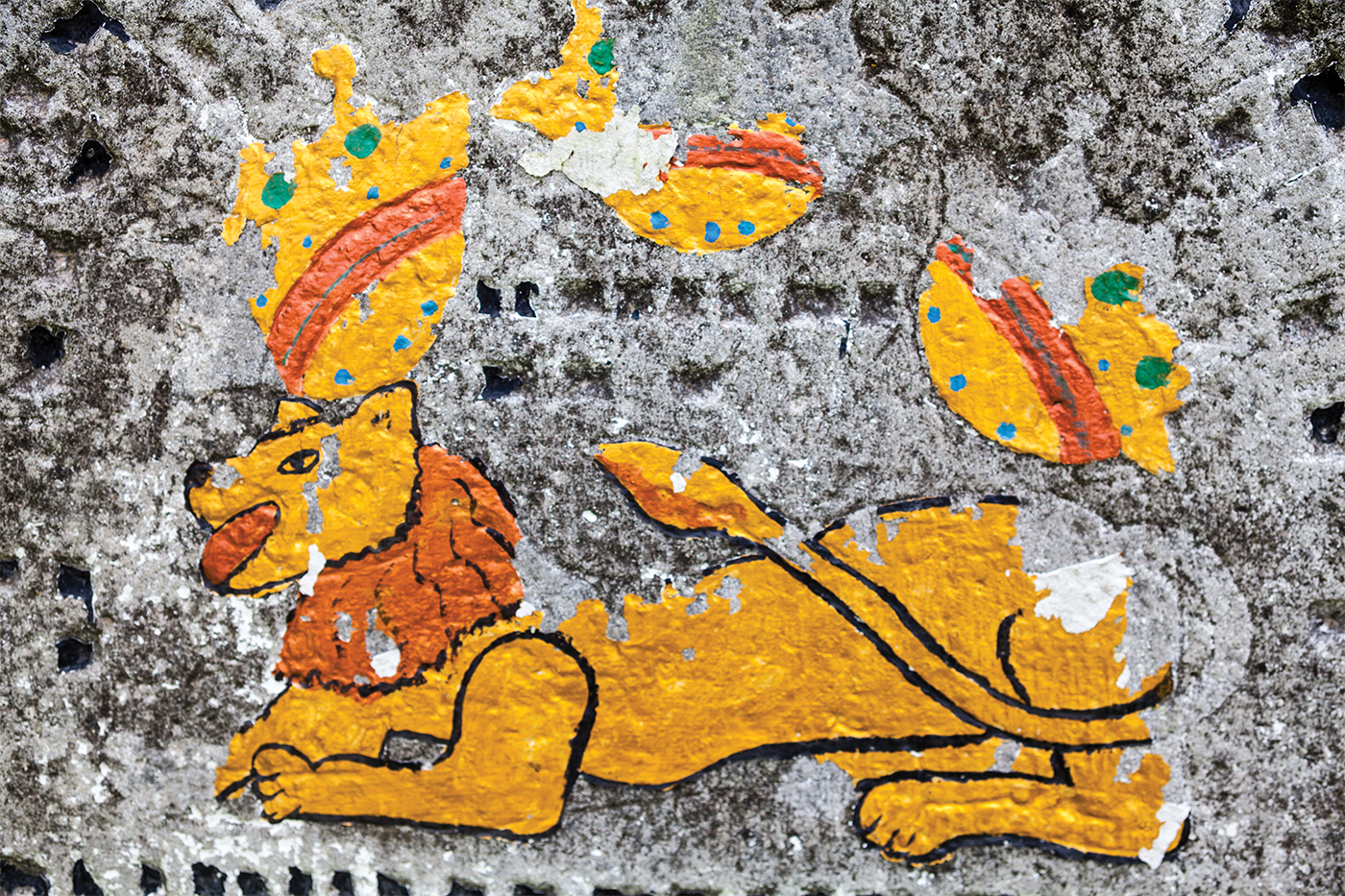
Figure 29.3. Yellow Lion of Judah painted on the old gravestone in the old Jewish cemetery in the Ukrainian Carpathians [Shutterstock / rootstock]
Opening the Seals
READ REVELATION 6:1–17
After all the buildup, the Lamb begins to open the seven seals. With the first four seals, a rider on horseback is revealed. Each rider is identified by a different color (white, red, black, green), and each brings devastating power on the earth. The white rider is a conqueror (6:2); the red rider removes peace from the earth (6:4); the black rider brings judgment (6:5); the green rider brings death (6:8).
What Is the Significance of the Scroll and Its Seals?
With the opening of the fifth seal, John sees under an altar the souls of those killed as martyrs. They cry out for justice for their murderers but must wait until the full number of martyrs has been completed (6:9–11). With the sixth seal comes a violent earthquake, the blackening of the sun, and a blood moon. The stars fall to earth, the sky splits apart, and mountains and islands are rearranged (6:12–14). The seventh seal is not opened for now.
After the opening of the first six seals, every class of people—whether kings or slaves—hide themselves in caves, trying to escape the devastation that has been unleashed (6:15). They would rather be killed by falling rocks than face the wrath of God and Christ (6:16–17).
The Vast Multitude
READ REVELATION 7:1–17
John sees four angels restraining the winds of the earth from four corners of the earth. Another angel arises from the east with the remaining seal, calling out to the first four angels not to harm the earth or the sea until the servants of God receive their own seals on their foreheads (7:1–3). The symbolic number of those sealed is 144,000, with 12,000 from each of the twelve tribes of Israel (12,000 × 12 = 144,000) (7:4–8). The number twelve symbolizes fullness, so 12 × 12 represents the complete fullness of the multitude of people who will be sealed for salvation.
Sure enough, this multitude is not limited to the twelve tribes of Israel but includes people from every nation, tribe, people, and language. And rather than taking symbolic numbers literally (i.e., 144,000), the multitude cannot be counted as they stand before the throne and the Lamb, bearing white robes and palm branches (7:9). They cry out, ascribing salvation to God and to the Lamb (7:10) as the angels, elders, and four living creatures again fall down before the throne in worship (7:11–12).
The multitude wears white robes that have been washed in the blood of the Lamb (7:14). While it may seem counterintuitive that blood has turned clothes white, the point is that these people have been cleansed from sin by Jesus’s death. As a result, they serve God day and night and find their shelter in him, no longer needing for anything, and being shepherded by the Lamb (it is also counterintuitive that a lamb is the shepherd) to the water of life as God wipes away their every tear (7:15–17).
The Seventh Seal and the Seven Trumpets
READ REVELATION 8:1–9:21
The seventh seal has been set apart from the first six so that by the time we reach it, some anticipation has been built. So it is striking that after the seventh seal is opened, heaven remains in silence for half an hour (8:1). In a scene full of action, the silence is deafening. Then seven angels take up seven trumpets and an eighth angel offers up the prayers of all believers like burning incense (8:2–4). But then the action really begins, as this angel fills the incense burner with fire and throws it to the earth, creating a great disturbance with thunder, lightning, and an earthquake (8:5).
In contrast to the great silence comes the sound of the seven trumpets. With the sounding of each comes a great disaster on the earth: a third of the earth burns up (8:7); a third of the sea becomes blood (8:8); a third of rivers and springs become wormwood (8:11); a third of the heavenly lights are darkened (8:12).
What Is Wormwood?
In an ominous warning, a flying eagle declares woes to those living on the earth because of the remaining three trumpets (8:13). With the sounding of the fifth trumpet, the abyss is opened and an army of locusts is released on the earth. Their only task is to torment all people who lack God’s seal on their foreheads—a torment worse than death (9:1–6). The locusts look like warhorses, wearing golden crowns and having human faces, women’s hair, lion’s teeth, and tails like scorpion stingers (9:7–10). They are under the control of the angel of the abyss, whose name is Apollyon, meaning Destroyer (9:11).
With the sounding of the sixth trumpet, four angels are released to kill a third of the human race. A huge, terrifying army is amassed, and it slaughters a third of humankind through fire, smoke, and sulfur coming from the mouths of warhorses (9:13–19). But even after this horrifying act of judgment, the remaining two-thirds of humanity does not repent of their evil and idolatry (9:20–21).
The Seventh Trumpet
READ REVELATION 10:1–11:19
Just as there was a delay leading up to the opening of the climactic seventh seal, so there is with the sounding of the seventh trumpet. It begins with a mighty and terrifying angel with a face like the sun and legs like fire. He holds a little scroll while his feet straddle land and sea (10:1–2). He swears an oath to God, saying that when the seventh trumpet sounds, the mystery of God will be completed, as the prophets have said (10:5–7).
John is then instructed to take the little scroll from the angel’s hand (cf. 10:2) and to eat it, which he does. It is sweet to eat but becomes bitter (10:8–10). John is told to prophesy and is given a measuring rod in order to measure the temple of God and to count those worshiping there (11:1). The rebellious nations will attack Jerusalem for forty-two months, and God’s two witnesses‚ described as two olive trees and two lampstands (cf. Zech. 4), will be protected while prophesying and demonstrating the powers that Moses and Elijah exercised (11:2–6; cf. Exod. 7–11; 1 Kings 17:1).
When they have completed their testimony, the two prophets will be killed by the beast from the abyss in the great city, figuratively known as Sodom and Egypt—where Christ was also crucified—and their bodies will be openly mocked by the rebellious nations (11:7–10). But the two prophets return to life after three and a half days and go up to heaven in full view of all, many of whom are killed by a violent earthquake (11:11–13). Now, finally, the seventh trumpet sounds, and heavenly voices sound praise for Christ, and the twenty-four elders worship God for the impending destruction of those who destroy. The heavenly temple opens with its ark of the covenant on display (11:16–19).
The Two Witnesses
The Cosmic Pregnant Woman
READ REVELATION 12:1–18
A pregnant woman clothed with the sun and a crown of twelve stars is ready to give birth (12:1–2). Immediately there appears a fiery red dragon that has seven heads and seven crowns. Its tail wipes out a third of the stars, and it stands ready to eat the woman’s baby (12:3–4). She bears “a Son,” who is snatched up to God while she flees into the wilderness (12:5–6).
Who Are the Woman and Her Son?
A war breaks out between the dragon’s army and the archangel Michael’s angels. The dragon—Satan—and his angels are cast out of heaven to the earth (12:7–9). A heavenly voice celebrates God’s victory over Satan and believers’ victory over him by the blood of Christ (12:10–12). The earthbound dragon persecutes the woman, who is given the means of escape. The frustrated dragon then goes after the rest of her offspring—believers in Christ (12:13–17).
The Dragon’s Beasts
READ REVELATION 13:1–18
A beast arises out of the sea, and it has ten crowned horns, seven heads bearing blasphemous names, and animal-like features. Satan gives it power and authority as the world becomes its worshipers (13:1–4). The beast has power to blaspheme against God to wage war against his people, while everyone else worships it (13:5–8).
A second beast arises from the earth, looking like a lamb but sounding like a dragon. It compels people to worship the first beast, performing signs and deceiving people (13:11–14). It gives the beast’s worshipers a mark that indicates participation in their community. The mark of the beast is the number 666 (13:15–18).
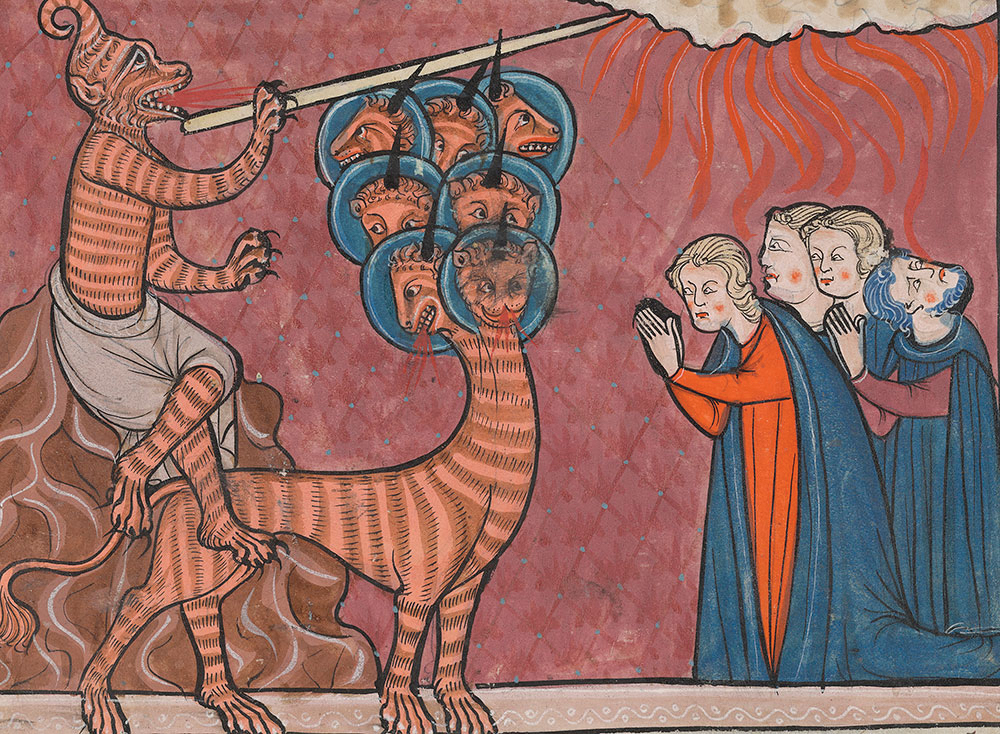
Figure 29.4. Illustration of Revelation 13:11–13 in “Four Miniatures from an Apocalypse” (thirteenth century) [Pierpoint Morgan Library, MS M.1071.2v. Gift of Mr. and Mrs. H. P. Kraus, 1985.]
The 144,000
READ REVELATION 14:1–20
The Lamb appears on Mount Zion with 144,000 people bearing the seal of the Father’s name on their foreheads. They sing a new song and as followers of the Lamb have been redeemed from humanity (14:1–5). Three angels announce the gospel to all people on earth as judgment approaches(14:6–7), the fall of Babylon the Great (14:8), and a warning for those who worship the beast (14:9–12). The Son of Man then appears on a cloud and harvests the earth with a sickle, while an angel throws the earth’s “grapes” into the winepress of God’s wrath (14:14–20).
The Seven Bowls
READ REVELATION 15:1–16:21
Seven angels appear with seven plagues of God’s wrath. There is also a sea of glass and fire with God’s people standing on it singing to the Lamb (15:1–4). The seven angels are given seven bowls of God’s wrath and are instructed to pour them out on the earth, unleashing severe sores, seas and rivers of blood, the sun’s scorching heat, darkness, drought, and a severe earthquake (15:5–16:18). As a result, cities fall, Babylon the Great drinks the cup of God’s wrath, islands and mountains disappear, and huge hailstones fall on the rebels against God (16:19–21).
The Mother of Prostitutes
READ REVELATION 17:1–18
After the pouring out of the seven bowls of God’s wrath, John is shown the judgment of the notorious prostitute who has seduced the world with her sexual immorality. She sits on a scarlet beast and is dressed in scarlet, carrying a golden cup full of her impurities. She is named Babylon the Great, the Mother of Prostitutes, and she is drunk on the blood of the saints (17:1–6).
The beast she sits on is the same that came up from the abyss and is going to destruction, taking with it the kings of the earth. These rulers will make war with the Lamb but will be conquered and destroyed (17:8–14). But before that, they will also turn against the prostitute and destroy her, according to God’s plan (17:15–18).
The Fall of Babylon and the Celestial Celebration
READ REVELATION 18:1–19:10
A great angel comes down from heaven to announce the fall of Babylon the Great, who has led the world and its leaders astray. Her people are called to leave her to avoid her fate (18:1–8). Instead the kings, merchants, and seafarers of the earth mourn her destruction (18:9–20). The final step in the destruction of Babylon the Great will be to be thrown into the sea like a large millstone (18:21–24).
After the fall of Babylon the Great, a vast heavenly multitude erupts into praise of God’s judgment and justice (19:1–5). They also celebrate the coming of the marriage of the Lamb and his bride, who is prepared in pure white linen for her bridegroom (19:6–8).
The Rider on a White Horse
READ REVELATION 19:11–21
Preparations for the marriage feast give way to the appearance of a white horse and its rider, who is called Faithful and True. He is a frightening figure with eyes of fire, multiple crowns, a robe dipped in blood, and a sharp sword coming from his mouth (19:11–15a). He will rule with an iron scepter and execute God’s wrath on the nations. His name is written, “KING OF KINGS AND LORD OF LORDS” (19:15b–16).
Who Is the Rider?
In anticipation of the fall of kings, commanders, their armies, and all who are opposed to the rider on the white horse, an angel calls the birds of the air to be ready to eat their flesh once they have been defeated (19:17–18). Then the beast, the kings, and their armies gather to wage war against the rider, but the beast and its false prophet are thrown into the lake of burning sulfur, and everyone else is killed by the sword coming from the mouth of the rider. The birds eat their flesh (19:19–21).
The First Resurrection
READ REVELATION 20:1–15
An angel binds Satan with a chain and throws him into the abyss for a thousand years, so that he can no longer deceive the nations (20:1–3). Those belonging to Christ are resurrected and reign with him for a thousand years (20:4–5).
The Millennium
Those raised to be with Christ at the first resurrection will not be subject to the second death, but will reign with Christ as his priests (20:6). After a thousand years Satan will be released to deceive the nations again, but he and his followers will be consumed by fire and thrown into the lake of fire for eternal torment (20:7–10).
Then John sees someone sitting on a great white throne with all the dead standing before him. The book of life is opened and the dead are judged, with the sea, death, and Hades giving up all their dead. Then death, Hades, and everyone whose name is not found in the book of life are thrown into the lake of fire (20:11–15).

Figure 29.5. Lithography of the Holy Trinity (God’s throne) in Missale Romanum by an unknown artist with the initials FMS from the end of the nineteenth century and printed by Typis Friderici Pustet [Shutterstock / Renata Sedmakova]
READ REVELATION 21:1–27
The ultimate climax of the book is when the new heaven and the new earth appear, with the first heaven and earth passing away (21:1). The new Jerusalem comes down out of heaven, and a voice declares that the dwelling place of God is now with humanity. He will wipe every tear from their eyes, and death, grief, and pain will no longer exist (21:2–4). The one on the throne is making everything new and will give the water of life to his people, while evildoers will experience the second death in the lake of fire (21:5–8).
Will There Be a New Creation?
An angel shows John the bride of the Lamb, which is the holy city of Jerusalem, radiant like jewels, with a high wall and twelve gates bearing the names of the twelve tribes of Israel. On the twelve foundations of the city are written the names of the twelve apostles of Christ (21:9–14). The angel measures the city, which stands as a giant cube made of jasper, glass, pearls, and every kind of jewel (21:15–21).
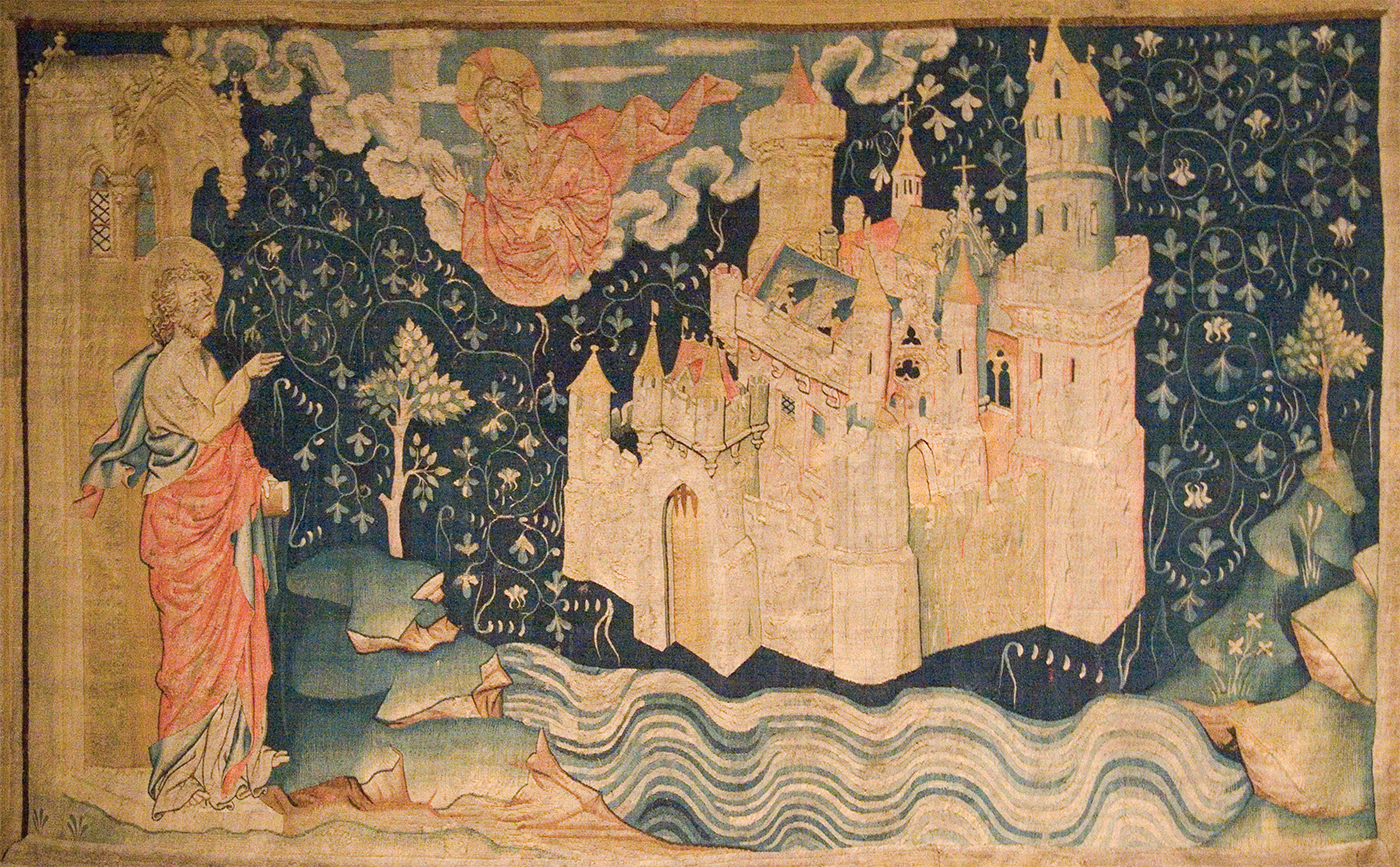
Figure 29.6. “The New Jerusalem” from Tapestry of the Apocalypse [Kimon Berlin, CC BY-SA 3.0 / Wikimedia Commons]
There is no temple in the new Jerusalem because God and the Lamb dwell directly with their people. There is neither sun nor moon because the glory of God illuminates the city. The nations walk by its light, bringing their glory to the city, while nothing unclean can ever enter it (21:22–27).
Life in the New Jerusalem
READ REVELATION 22:1–21
Flowing through the city is the river of the water of life, with the tree of life on each side of the river, offering life and healing. The throne of God and of the Lamb is there, with their servants worshiping God. They see his face and bear his name, enjoying his presence in his light forever (22:1–5).
The Garden and the City
The words that John writes are declared by God to be faithful and true and a prophecy of what will happen soon (22:6–7). Jesus, the Alpha and Omega, declares that he is coming soon to judge all people. Those who are washed will have access to the tree of life, but evildoers will be kept outside the city (22:10–16). John concludes his book with the warning that it must not be altered and with the prayer “Amen! Come, Lord Jesus!” (22:18–20).
Implementation—Reading Revelation as Christian Scripture Today
Revelation is a majestic, awe-inspiring, and deeply hopeful book that offers to enrich our lives and our churches. The time it takes to carefully work through it is a well-made investment that will continue to pay dividends until Jesus comes again. While Revelation needs to be wrestled with by individuals as we puzzle over some of its symbols and details, it really is a book best handled in community. We need one another’s help to interpret it, and to absorb its life-changing, mind-altering message.
Apart from simply offering hope, Revelation expands our vision of Jesus Christ and of what God is doing in the cosmos. Christ is bigger and more glorious than we ever imagined, and God’s plans for renewal are vaster than the universe itself. Perhaps more than any other book, Revelation helps us to grasp the big picture. It gives us perspective so that we can live according to reality. It blows open our little lives in our little worlds and shows us that we are part of a cosmic drama that will revolutionize the entire creation. And it encourages us to pray, along with John, “Come, Lord Jesus!”
Christian Reading Questions
- Summarize the message of Revelation in one sentence.
- Outline the structure of Revelation.
- If you were to explain the genre of Revelation to someone, what would you say?
- Read Revelation 21–22. Compile a list of references to the Old Testament you can detect in these chapters. Why do you think John relied so heavily on the Old Testament throughout Revelation?